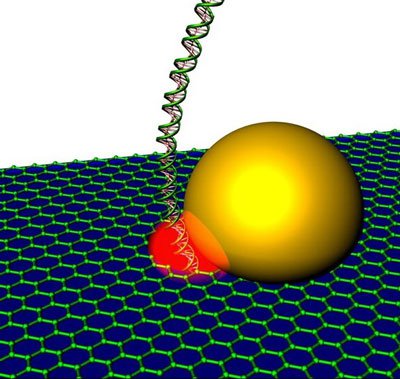Researchers from Berkeley Lab and the University of California (UC) Berkeley have come up with a simple process for producing nanopores (about 2 nanometers in diameter) in a graphene membrane using the photothermal properties of gold nanorods.

The researchers aim to use this discovery to construct a direct DNA sequencing process, which will be simultaneously electrical and optical. This should facilitate a faster sequencing procedure, as traditional methods in which DNA components are sorted by an electrical current passing through nanopores on a silicon chip tend to get congested and slow, as information flowing through thousands of nanopores needs to be handled. Adding an optical component should, according to the researchers, help eliminate bottlenecks and speed up the sequencing process.
A crucial part of this achievement is the single-step photothermal mechanism that enables the creation of graphene nanopores with self-aligned plasmonic optical antennas. DNA molecules can be labeled with fluorescent dyes so that each base-pair is marked with a signature intensity as it passes through the junction of the nanopore and its optical antenna. Also, adjustments can be made to the dimensions of the nanopores and antenna, as well as functionalization of the antenna to enable the direct optical detection of RNA, proteins and more.
Click here for more information on how graphene can assist DNA sequencing



